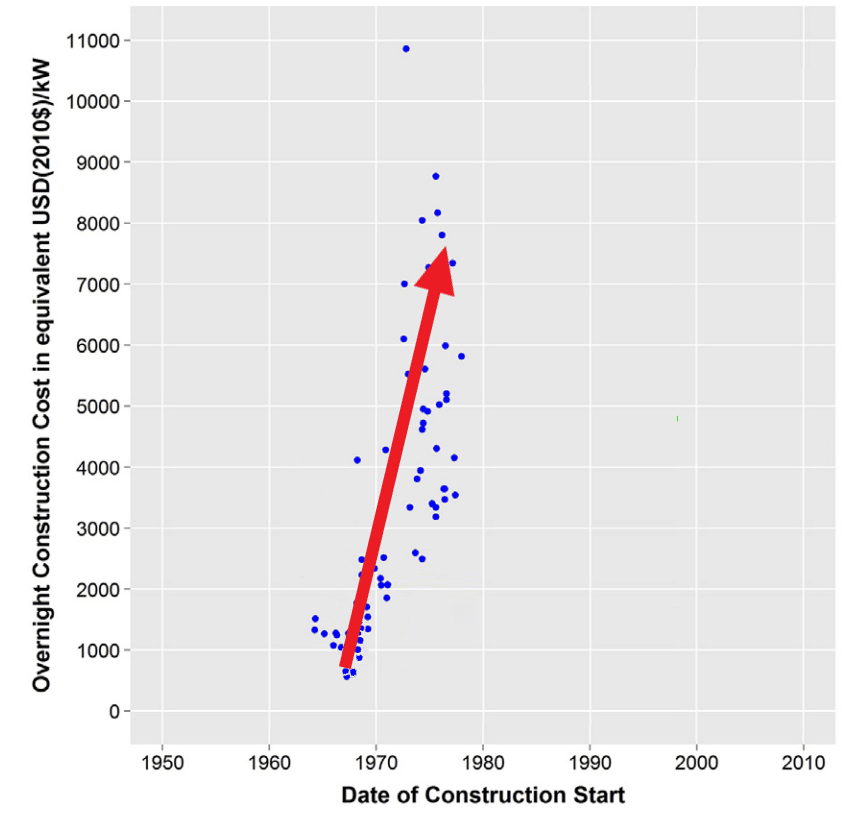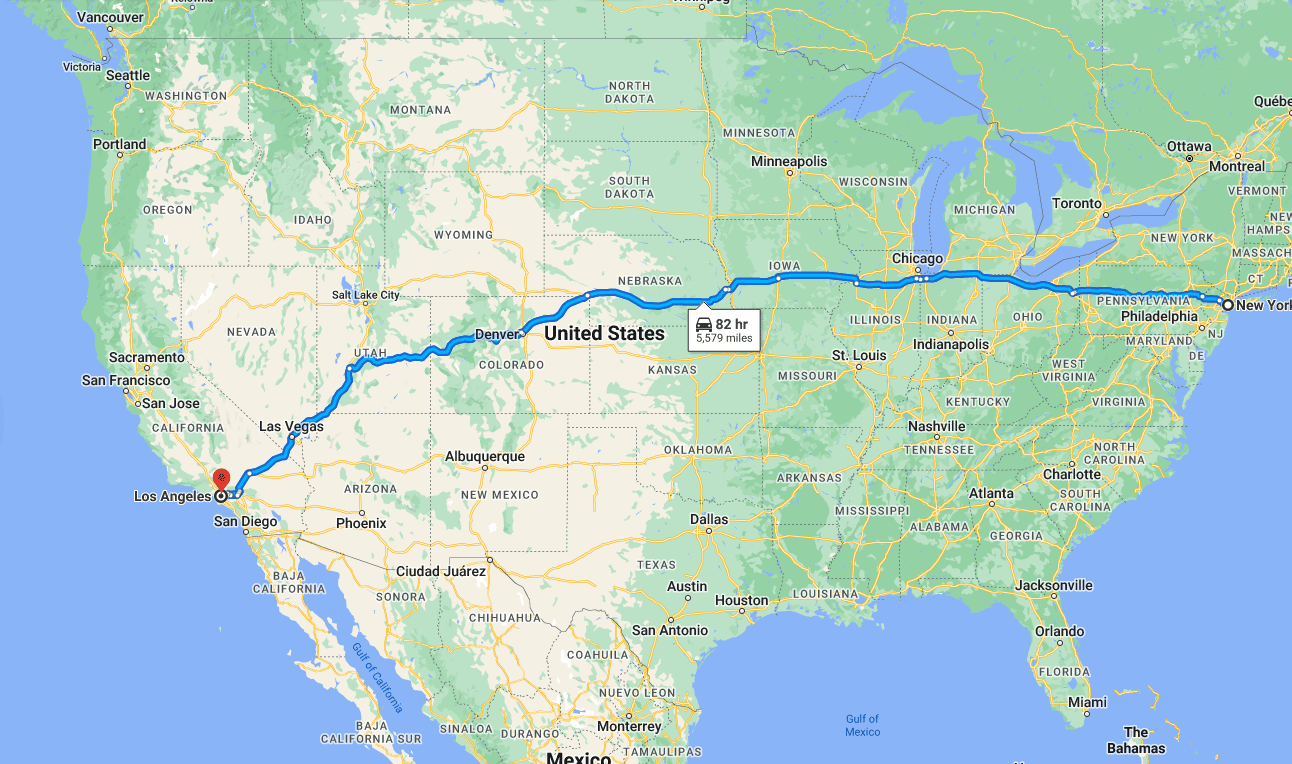Martin was on the board of directors of the Sierra Club, an influential environmentalist group. And although no one knew it that day, his vote marked the beginning of the end for nuclear power.
Most of the Sierra Club board voted for the nuclear plant. After all, nuclear was (and still is) the safest, cleanest, most reliable energy on the planet. Environmentalists and lobbyists at the time gave full-throated endorsements of the new technology:
– Sierra Club Director Ansel Adams
But Martin was hell-bent on making sure that plant wasn’t built…
You see, he believed that California didn’t need any new power plants—period.
“You don’t need power… you can go back to using a spear and picking berries.” – Martin Litton
In fact, California didn’t need any more people.
You see, for Martin and two other directors of the Sierra Club, nuclear plants presented a problem:
They brought humans with them.
And Martin wanted a drastic reduction in population to keep California wild. “There are too many people anyway,” he said.
Along with two other directors of the Sierra Club, he fought for years—tooth and nail—against the construction of the Diablo Canyon nuclear plant.
They quickly decided playing fair was optional. They’d lie, cheat, and steal to keep nuclear from blowing up.
But their radical anti-growth, anti-human message was never going to work on Californians.
So these environmentalists and other anti-nuclear activists changed their tactics.
Instead of persuading the public, they would prey on their ignorance—and scare the fire out of them.
The Day Nuclear Died
Their first objective became to get people to confuse nuclear energy with nuclear bombs.
Since atomic energy had first been used to level cities at the end of World War II, it was child’s play. Millions became convinced that a nuclear meltdown was the same as a nuclear bomb.
Then, they fed generations of people the lie that radioactivity from nuclear energy could kill them.
The logic was sound: When people thought nuclear was a threat to their lives, they’d regulate it out of existence.
“Our campaign stressing the hazards of nuclear power will supply a rationale for increasing regulation… and add to the cost of the industry.”
– Sierra Club Executive Director Michael McCloskey, 1974
The campaign was wildly effective. Due to new regulations, parts of plants that had already been built had to be ripped out and rebuilt—leading to absurd cost increases.
The DC Circuit Court handed the environmentalists a gift on a silver platter. They opened the door for citizen lawsuits to intervene in the licensing and construction process.
That slowed construction even further, causing costs to skyrocket and nuclear plans to be abandoned.
For any nuclear plant started in the U.S. in the early ‘70s, the price of construction skyrocketed.
Two nuclear reactors, Vogtle 1 and 2, were proposed in 1971 for $660 million. They opened in 1987 and 1989 for a total cost of nearly $9 billion.
In 1974, activists were successful in getting the Atomic Energy Commission abolished.
It was replaced by the Nuclear Regulatory Commission (NRC), which became responsible for licensing new nuclear reactors.
- Since the NRC was formed, the number of new nuclear plants that have broken ground in the United States is zero.
Two years later, the California Energy Commission decided it only approve nuclear plants if the developers could give precise fuel and waste disposal costs for the lifetime of the plant—a deliberately impossible task.
As goes California, so goes the nation. And more than 30 states followed suit.
In 1978, Kern County voters rejected a nuclear power plant for the first time in U.S. history—with 70 percent voting against. It would have been the highest-capacity nuclear plant in the world.
- Radical regulations, rising costs and a scared public caused more than 60 nuclear units to be canceled between 1975 and 1980.
Thanks to the help of Martin Litton and the Sierra Club, nuclear was dead on arrival.
When the Rubber Meets the Rolling Blackouts
Two plants, Diablo Canyon and San Onofre, barely made it out alive.

For decades, they provided more than 20 percent of California’s energy consumption.
In other words, just 8 more plants would provide California with 100 percent carbon-free energy for the entire 21st century.
It was exactly that massive amount of clean energy from nuclear that became its undoing.
You see, figuring out how to shut down nuclear would create a profitable billion-dollar business for solar, wind, and natural gas companies overnight.
When renewable lobbyists caught wind of the opportunity, they went into hyperdrive. No need to play clean for this round, either.
And they very nearly succeeded in killing off nuclear for good.
They started with San Onofre, which was forced to close in 2012.
Its main energy replacement? Carbon-heavy natural gas.
-
Shutting down San Onofre was the equivalent of putting two million cars on the road.
Those two million cars lined end to end would make a convoy from Los Angeles to NYC (and back again).
Then the lobbyists moved on to Diablo Canyon, forcing PG&E to agree to shut it down by 2025.
They claimed it would be cheaper to shut it down and replace it with other sources of energy than to continue operations.
Here’s the kicker.
That claim is based on a single study, funded by Friends of the Earth—whose founder was the executive director of the Sierra Club.
And it flat out lies about everything . . . from fuel costs to capital costs to the cost of energy.
In fact, a report from MIT and Stanford says that keeping Diablo Canyon running until 2035 would reduce California’s carbon emissions by 11 percent.
It would also save the state $2.6 billion—or $21 billion if it stays open until 2045.
(Or they could decommission the plant, which would cost nearly $4 billion.)
Fortunately, the side playing dirty is going to lose this time.
Because hundreds of thousands of Californians are already experiencing rolling blackouts—during triple-digit heat waves.
“We are in a very bad situation compared to even the worst case that we anticipated.”
– California Energy Commission vice chair Siva Gunda
One politician put it simply: If the plant gets decommissioned, “we don’t have enough juice to keep the lights on and keep air conditioners working and keep people’s EVs charged.”
Shutting down the cleanest, most readily available form of energy is political suicide.
The last time widespread outages occurred, the governor was kicked out of office.
And everyone knows it.
So at 1 a.m. on the last day of session, the state legislature voted to keep Diablo Canyon open.
For a half-century, Diablo Canyon has predicted the fate of nuclear.
And now, it’s a signal of a broad revival of nuclear power across the country.



